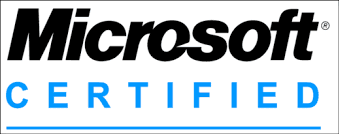QR Codes: A Modern Approach to Easy Web Access
QR codes have revolutionized the way we interact with digital content, providing cell phone users with a seamless method to access websites. SharePoint users can take advantage of this technology by embedding QR codes directly into their SharePoint lists, thanks to the QR Code template available at
SharePointDashboards.com. This template stands out for its ease of use, requiring only a few simple steps to implement and customize. By incorporating QR codes into SharePoint, businesses can enhance their project management, employee management, and tracking systems, all while improving the efficiency of charting and visual status indicators.
Implementation in SharePoint
To implement QR codes in SharePoint, start by creating a standard SharePoint text field designed to contain hyperlinks. Navigating to SharePointDashboards.com, you can access the QR Code template. Here, you'll have the opportunity to tweak the size, colors, and other options to ensure your QR codes match your corporate branding and functional needs. Once the QR code preview looks satisfactory, copying and pasting the template into your SharePoint list completes the process. This setup is quick, taking only a few minutes, but the benefits it brings can be substantial.
Additionally, this QR Code template is just one of the many customization options available through SharePoint JSON formatting at
SharePointDashboards.com. JSON formatting allows users to visually customize their SharePoint views without any programming knowledge. By applying a pre-made template, users can transform a basic SharePoint list into a dynamic, visually engaging resource.
Charting and Visual Status Indicators
In the realm of project management, charting and visual status indicators play a vital role in tracking progress and making informed decisions. QR codes contribute to this by offering a straightforward, visual method to access additional project information or resources directly from a list item. This eliminates the need for lengthy searches or manual data entry, streamlining the workflow and leaving room for more strategic tasks.
QR codes can be aligned with color-coded status indicators in a SharePoint dashboard to enhance visual management practices. For example, a project status list might use color indicators (red, yellow, green) for quick status assessments while QR codes can direct users to detailed reports, ensuring that everyone involved in the project can immediately access up-to-date information.
Project Management and Employee Management
Project managers can leverage QR codes in SharePoint to improve communication and resource sharing within their teams. For instance, attaching a QR code to a specific task in a project schedule can allow team members to quickly access relevant documents, instructional videos, or external resources critical for completing the task. This kind of immediate access reduces downtime and sharpens focus on delivering results.
In employee management, QR codes provide a modern twist to performance tracking and development. By placing a QR code alongside employee profiles or training sessions in SharePoint, HR managers can instantly furnish staff with links to personal development resources, feedback forms, or internal career openings, ensuring that valuable opportunities are not missed.
Tracking and Efficient Resource Management
Tracking resources effectively is a core component of operational efficiency. Dashboards equipped with QR codes enable managers to gain real-time insights into inventory levels, equipment status, or project timelines by clicking through from one QR code to detailed reports or analytics pages. This built-in flexibility facilitates agile responses to issues as they arise, maintaining smooth operation flow and resource allocation.
Furthermore, integrating QR codes in a SharePoint-based tracking system can greatly reduce physical paperwork by linking out to digital files and tracking logs stored outside of SharePoint. As organizations look to reduce carbon footprints, the shift toward digital management practices is more appealing than ever.
Use Case Scenarios
Consider the following scenarios where integrating QR codes into a SharePoint environment proves advantageous:
- Project Updates: A project manager uses QR codes in a SharePoint list to direct team members to the latest project updates or status reports, promoting transparency and coordination in real-time.
- Employee Onboarding: HR departments can utilize QR codes linked to SharePoint resources to quickly provide new employees with access to onboarding schedules, company policies, and training videos.
- Inventory Management: Warehouse staff employ QR codes to instantly check stock levels or reorder quantities via SharePoint, minimizing overstock or shortages.
- Customer Engagement: Customer service teams benefit from linking QR codes to SharePoint-based customer profiles, enabling swift access to purchase histories or customer preferences during interactions.
Exploring SharePoint JSON Formatting
JSON formatting in SharePoint is a powerful tool that allows users to transform a standard SharePoint list view into an appealing visual display. With SharePointDashboards.com, selecting and applying a JSON template is straightforward, thanks to the user-friendly visual interface. No programming experience is necessary, as these templates offer a range of pre-designed formats, including the QR Code template.
By applying a JSON template, users can customize how list items are displayed, including changing fonts, colors, and even embedding QR codes. This customization enhances user engagement and enables SharePoint to serve as a dynamic hub of information tailored to an organization's specific needs.
SharePointDashboards.com provides access to hundreds of JSON formatting templates, with 21 available for free, enabling organizations to experiment with various dashboards and configurations to find the best fit for their operational strategy.
In conclusion, integrating QR codes into SharePoint lists offers a modern solution to many traditional challenges faced in project and employee management, as well as tracking and resource allocation. By fully leveraging QR code technology, organizations can enhance their operational efficiency, improve communication, and integrate digital solutions seamlessly into their existing infrastructure.






